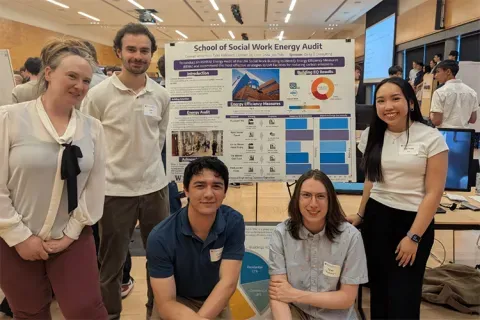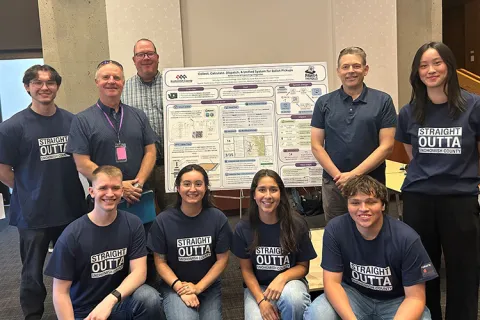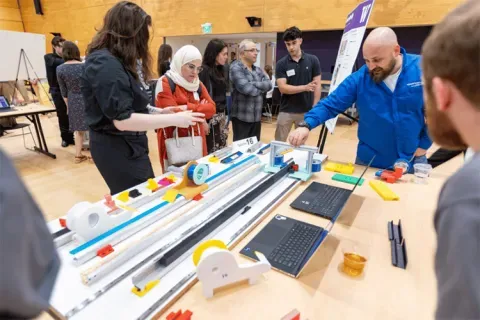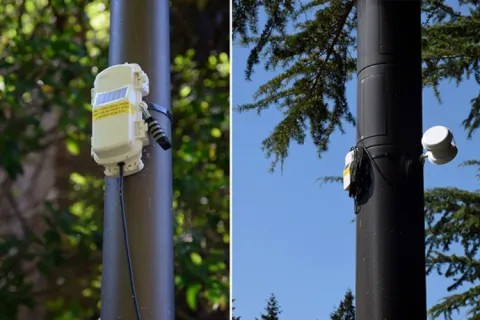Hexcel
Strength and Workability of Environmental and Sustainable Hexcel Nature Range Composites
Hexcel has a line of sustainable bio-based materials - resins and fibers - that are relatively new to the market. They have not been readily available to the American market, rather mainly marketed in the EU as they are currently manufactured there. This means there is little experience with these materials in the American market. This student team will work to get hands on experience, fabricate samples, test those samples, evaluate its performance, and devise potential applications in the composite market. This student team will also work to produce a demonstrator part out of this Nature Line material. The students will provide valuable knowledge, data, and experience for Hexcel's R&T Kent lab and Hexcel as a whole. This student team will work to build enough test panels for impact, open hole compression, strain, tensile, and environmental cycling to test moisture absorption and effects on the results of the above mentioned tests. This student team will also work to design and complete a test method to evaluate material drapability and workability and provide an evaluation of the material. As a stretch goal, this student team qill work to delve into a processing comparison between oven and autoclave cured methods by completing panels, using micrographs to check for porosity, cracks, and other irregularities. Finally, this student team will work to build a demonstrator part, oven or autoclave cured to be determined by the team, and present their findings in the final report at the end of the capstone program. This student team will work to deliver results from all the material testing as well as a comparative study to existing incumbent materials in use. This student team will work to present a demonstrator made with the Nature Range materials, and present all findings along with pictures of setups, testing, micrograph results, lessons learned along the way, and recommended uses for this material. The general project development pathway this student team will work toward can be described as: Find a potential application, compare the Nature Line materials to existing products that are used for that application. Once a potential application is identified, determine the tests, make the panels, perform the tests, then make a demonstrator.
Faculty Adviser(s)
Luna Yue Huang, Materials Science & Engineering
Hanson Fong, Materials Science & Engineering
Related News

Mon, 10/13/2025 | UW Mechanical Engineering
Capstone collaboration leads to award
An ME capstone team received first place for its energy audit of the UW School of Social Work building.

Thu, 07/17/2025
UW engineering students develop smart ballot solution
UW engineering students develop smart technology solution to improve ballot collection for Snohomish County.

Mon, 07/07/2025 | UW Mechanical Engineering
Capstone creations
Students displayed innovative capstone design projects at the 2025 expo.

Fri, 09/20/2024 | UW Civil & Environmental Engineering
Smarter irrigation for a greener UW
A new project combines satellite data with ground sensors to conserve water and create a more sustainable campus environment.